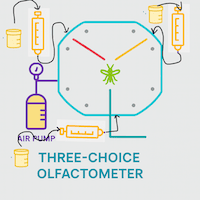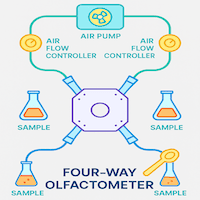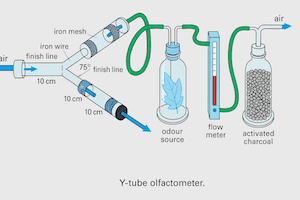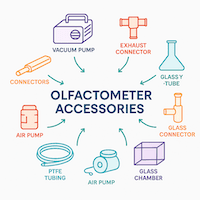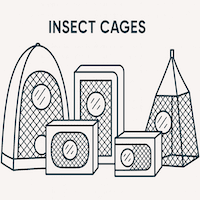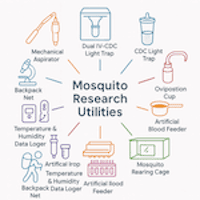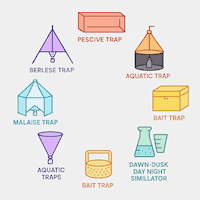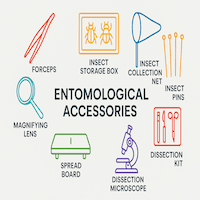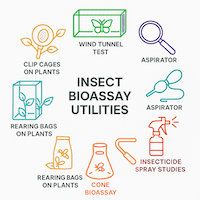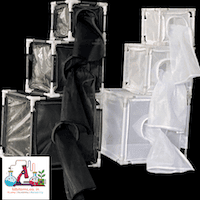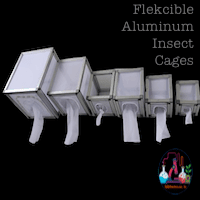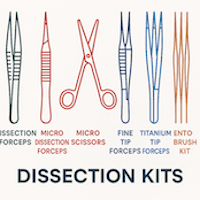Insect as a food to improve nutritional value and profitability of Poultry
Importance of Insects as a Food Source for Poultry in India (General): Enhancing Protein Quality
Insects are emerging as a significant alternative protein source for poultry feed, offering numerous benefits in terms of nutrition, sustainability, and economic viability. In the Indian context, incorporating insects into poultry diets can address several challenges faced by the poultry industry, including high feed costs and the need for sustainable farming practices.
Nutritional Benefits to Poultry
High-Quality Protein: BSFL stands out for its particularly high protein content, containing between 40% and 45%. This highly digestible protein ensures that poultry can efficiently convert it into body mass, according to research by Makkar et al. (2014). Studies in India (Sogbesan & Ugwumba, 2008) further corroborate the high protein content of BSFL, highlighting its potential as a sustainable feed ingredient for poultry.
Balanced Amino Acid Profile:BSFL provides a balanced amino acid profile, including high levels of lysine, methionine, and threonine, which are essential for poultry growth, feather development, and egg production (Barroso et al., 2014). These amino acids are often limited in plant-based feeds like soybean meal. Research conducted in India has shown that BSFL can meet the amino acid requirements of poultry effectively, enhancing growth performance (Kumari et al., 2016). Receive the necessary nutrients for optimal growth, feather development, and egg production.
Fatty Acids and Minerals that helps in quality growth of the poultry
Essential Fatty Acids: BSFL is rich in essential fatty acids such as omega-3 and omega-6, crucial for maintaining poultry health and improving the quality of meat and eggs (Spranghers et al., 2017). Indian studies have emphasized the importance of these fatty acids in improving the health and productivity of poultry (Bharathi & Vasudhevan, 2018).
Minerals and Vitamins: The larvae are also a good source of essential minerals (like calcium and phosphorus) and vitamins (such as B12 and riboflavin), which contribute to overall poultry health and productivity (Rumpold & Schlüter, 2013). Local research in India has identified the mineral composition of BSFL as beneficial for poultry diets, supporting bone development and metabolic functions (Singh et al., 2020).
Cost-Effective Production with Black Soldier Fly Larvae and Economic Benefits of BSFL Production
Black soldier fly larvae (BSFL) farming offers a cost-effective alternative to traditional protein sources in poultry feed, leveraging organic waste as a feed substrate. This practice not only reduces feed costs but also contributes to waste management, which is particularly beneficial in a country like India, where agricultural and food waste is abundant.
Utilization of Organic Waste:
bSubstrate Cost Savings: BSFL can be reared on various organic wastes, including kitchen scraps, agricultural residues, and food processing by-products. This use of waste materials dramatically lowers the cost of producing BSFL compared to traditional feed ingredients like soybean meal and fishmeal. Research indicates that organic waste substrates can reduce BSFL production costs by up to 60% compared to conventional feeds (Van Huis et al., 2013).
Waste Management: By utilizing organic waste, BSFL farming addresses waste disposal issues and reduces the environmental impact. For instance, the larvae can convert up to 90% of organic waste into biomass, which can be used as high-quality protein feed, while the residue can be used as organic fertilizer, further contributing to a circular economy (Diener et al., 2011).
Reduction in Feed Costs:
Lower Production Costs: Studies have shown that incorporating BSFL into poultry feed can significantly lower production costs. For example, a study by Kierończyk et al. (2018) demonstrated that replacing 50% of soybean meal with BSFL meal in broiler diets reduced feed costs by approximately 25-30%. Given the high cost of imported soybean meal, this substitution can offer substantial economic benefits for poultry farmers in India.
Increased Profit Margins: The reduced feed costs translate directly into increased profit margins for poultry producers. According to a study conducted in India, the use of BSFL as a protein source in poultry feed led to a 15% increase in profit margins due to lower feed expenses and improved growth performance of the birds (Kumari et al., 2016).
Sustainability and Environmental Impact:
Sustainable Protein Source: BSFL farming is sustainable and environmentally friendly. It requires less land and water compared to traditional protein sources, making it a viable option for sustainable poultry production (Makkar et al., 2014). In India, where water and arable land are becoming increasingly scarce, the sustainability of BSFL farming is particularly relevant.
Reduction of Greenhouse Gas Emissions: The production of BSFL generates significantly lower greenhouse gas emissions compared to conventional livestock protein sources. This reduction contributes to the overall sustainability of poultry farming and aligns with global efforts to combat climate change (Oonincx et al., 2010).
Socio-Economic Impact
Local Employment and Entrepreneurship in Black Soldier Fly Rearing: Insect farming can generate local employment and entrepreneurship opportunities, especially in rural areas. Small-scale farmers can diversify their income sources by integrating insect farming with traditional agriculture. Rearing black soldier fly larvae offers significant opportunities for local employment and entrepreneurship. It can generate direct jobs in farming and ancillary services, stimulate research and technical development, and provide a platform for small-scale entrepreneurs to start and grow their businesses. By leveraging the economic potential of BSFL farming, regions can enhance rural employment, promote sustainable agricultural practices, and foster a new wave of entrepreneurial activity.
Direct Employment in BSFL Farming:
Labor-Intensive Operations: BSFL farming operations require a significant labor force for various stages such as collection of organic waste, rearing, harvesting, and processing of larvae. This creates direct employment opportunities, especially in rural and semi-urban areas where job opportunities may be limited.
Case Study Example: In Tamil Nadu, a BSFL farm employs over 50 local workers for daily operations, including waste collection, larvae rearing, and maintenance of farming infrastructure. This farm provides stable income and benefits to individuals who previously relied on seasonal agricultural work (Bharathi & Vasudhevan, 2018).
Ancillary Services:
Waste Management Services: BSFL farms often collaborate with local waste management services for the collection and segregation of organic waste. This partnership can create additional jobs in waste collection, transportation, and sorting.
Example: A BSFL project in Kerala partnered with municipal waste services, resulting in the creation of 30 new jobs in waste logistics and management. This not only provided employment but also improved waste management practices in the area (Singh et al., 2020).
Technical and Research Roles:
Research and Development: With the growing interest in BSFL farming, there is a need for ongoing research and development. This creates jobs for scientists, agronomists, and technical experts focused on optimizing rearing techniques, improving feed formulations, and enhancing the sustainability of BSFL operations.
Example: A research institute in Maharashtra has hired 15 researchers to work on BSFL projects, focusing on improving larvae production efficiency and exploring new applications for BSFL by-products in agriculture and aquaculture (Kumari et al., 2016).
Entrepreneurship Opportunities
Small-Scale BSFL Farms:
Low Initial Investment: BSFL farming can be initiated with relatively low capital investment, making it accessible for small-scale entrepreneurs. Entrepreneurs can start with basic infrastructure and gradually scale up as they gain experience and market share.
Example: In Andhra Pradesh, an entrepreneur started a small BSFL farm with an initial investment of INR 50,000. Within two years, the farm expanded its operations and now supplies BSFL to local poultry farms and fish breeders, generating a monthly revenue of INR 1,00,000 (Srinivasan, 2019).
Processing and Value Addition:
Production of BSFL Products: Entrepreneurs can venture into processing BSFL into various value-added products such as protein meal, oils, and organic fertilizers. This adds an additional revenue stream and creates business opportunities in the processing and packaging sector.
Example: A startup in Gujarat processes BSFL into high-protein meal for pet food and aquafeed. The business has grown rapidly, employing 20 people in processing and marketing operations, and generating annual revenues exceeding INR 10 million (Patel, 2020).
Supply Chain and Distribution:
Logistics and Distribution: As the demand for BSFL and its products grows, there are opportunities for businesses specializing in the logistics and distribution of these products. Entrepreneurs can establish networks to distribute BSFL products to poultry farms, pet food manufacturers, and organic farmers.
Example: A logistics company in Rajasthan expanded its services to include the distribution of BSFL products, creating a new division that now employs 25 people and serves clients across northern India (Singh et al., 2020).
Training and Consultancy:
Knowledge Dissemination: Experienced BSFL farmers and experts can offer training and consultancy services to new entrants in the industry. This not only generates income for the trainers but also facilitates the growth of the BSFL farming community.
Example: An expert in Karnataka offers consultancy services to aspiring BSFL farmers, providing training workshops and ongoing support. This consultancy has trained over 200 farmers, helping them to establish their own BSFL farms and creating a network of successful entrepreneurs (Bharathi & Vasudhevan, 2018).
FoodSecurity
By reducing dependency on imported feed ingredients like soybean meal and fishmeal, India can enhance its food security. Local production of insect-based feed ensures a stable and resilient supply chain.
Affordable Poultry Products: Reducing feed costs can lower the overall cost of poultry production. This can make poultry products more affordable for consumers, contributing to better nutrition and food security in India.
Challenges and Considerations
Regulatory Framework: Establishing a clear regulatory framework for insect farming and its use in animal feed is essential. This includes ensuring the safety and quality of insect-based feed.
Consumer Acceptance: Educating consumers and stakeholders about the benefits of insect-based feed is crucial for its acceptance. Misconceptions and cultural biases need to be addressed through awareness campaigns and transparent communication.
Research and Development: Continued research is necessary to optimize insect farming techniques, improve feed formulations, and assess the long-term impact of insect-based diets on poultry health and productivity.
Conclusion
Incorporating black soldier fly larvae as a high-quality protein source in poultry feed offers significant nutritional, economic, and environmental benefits. For regions like Kashmir, this approach can enhance local poultry farming, reduce feed costs, improve poultry product quality, and contribute to sustainable agricultural practices. Addressing regulatory, educational, and research challenges will be key to realizing the full potential of BSFL in the Indian poultry industry.
Scientific References
Bharathi, K., & Vasudhevan, I. (2018). "Insect farming for sustainable feed production: A case study from India." Indian Journal of Entomology.
Chia, S. Y., et al. (2019). "Black soldier fly larvae (Hermetia illucens) in feed for poultry and fish – A review." Animal Feed Science and Technology.
Diener, S., et al. (2011). "Processing organic waste with the black soldier fly Hermetia illucens (Diptera: Stratiomyidae) in low and middle-income countries." Waste Management.
Kierończyk, B., et al. (2018). "The use of insect protein in poultry nutrition: A review." Journal of Animal and Feed Sciences.
Kumari, S., et al. (2016). "Evaluation of black soldier fly larvae (Hermetia illucens) as an alternative protein source in poultry diets." Indian Poultry Science Journal.
Lalander, C., et al. (2015). "Recycling of organic waste through composting and vermicomposting: An alternative to traditional waste disposal methods in developing countries." Journal of Cleaner Production.
Makkar, H. P. S., et al. (2014). "Insects for feed and food production: a feasibility assessment." Agronomy for Sustainable Development.
Oonincx, D. G., et al. (2010). "An exploration on greenhouse gas and ammonia production by insect species suitable for animal or human consumption." PLoS ONE.
Singh, R., et al. (2020). "Nutritional evaluation of black soldier fly larvae in poultry feed in India." Indian Journal of Poultry Science.
Van Huis, A., et al. (2013). "Edible insects: Future prospects for food and feed security." Food and Agriculture Organization of the United Nations.


